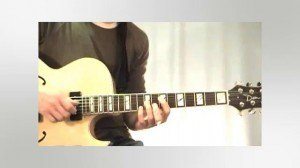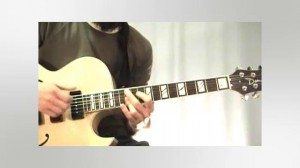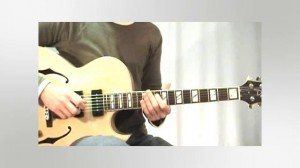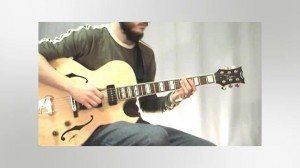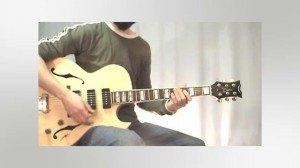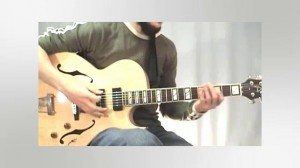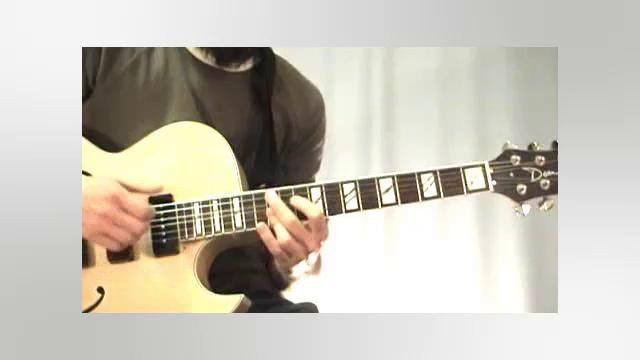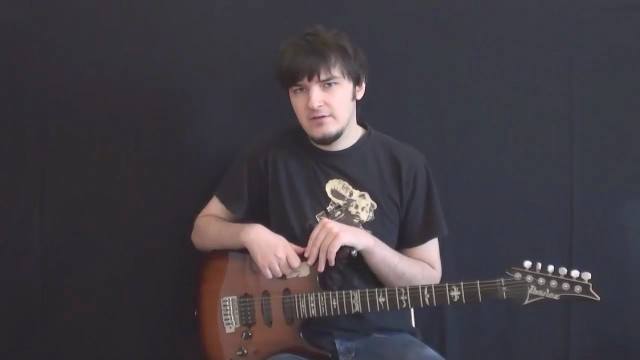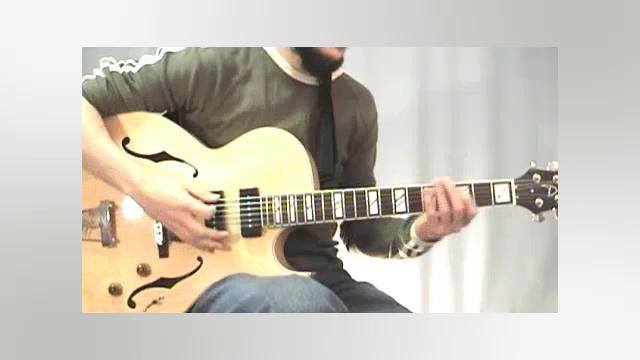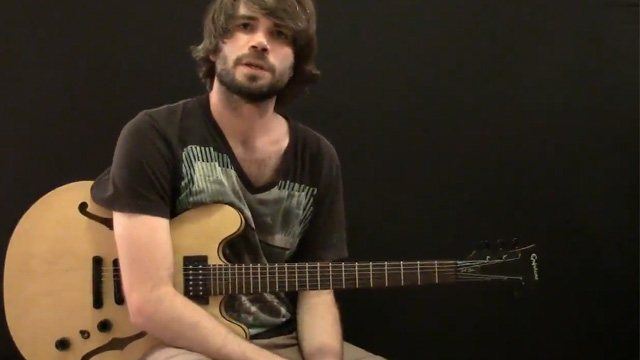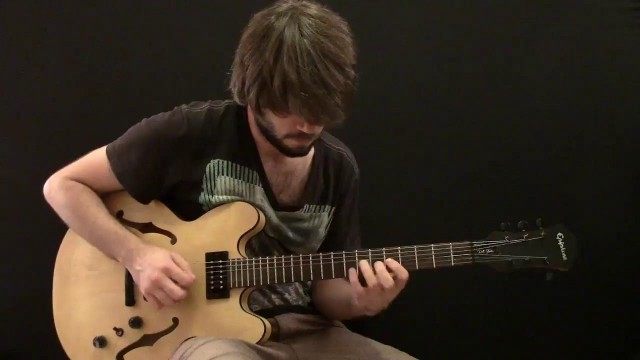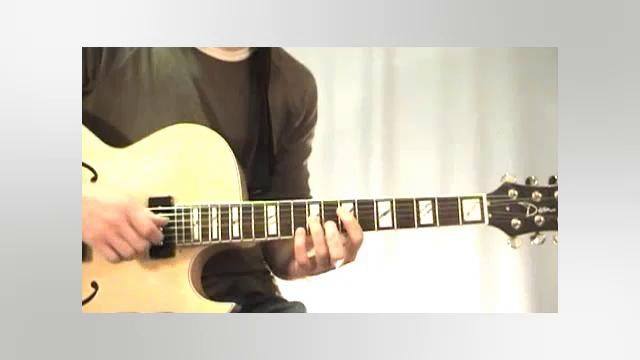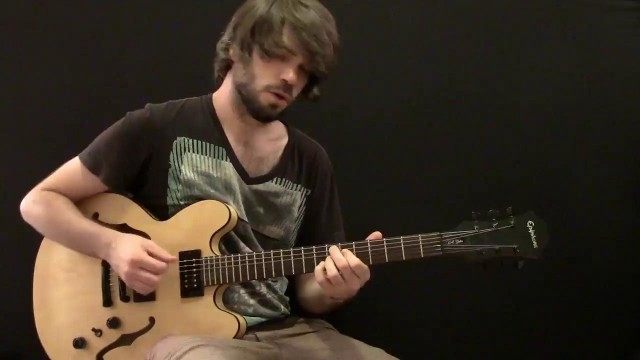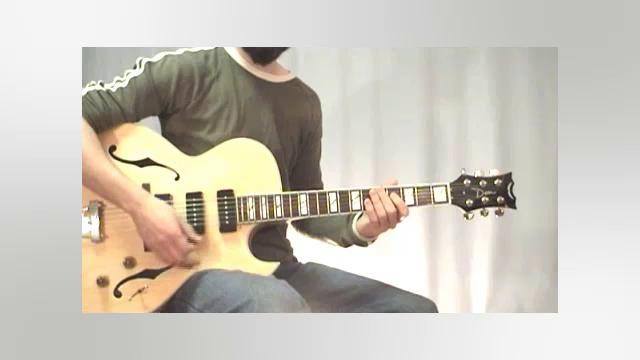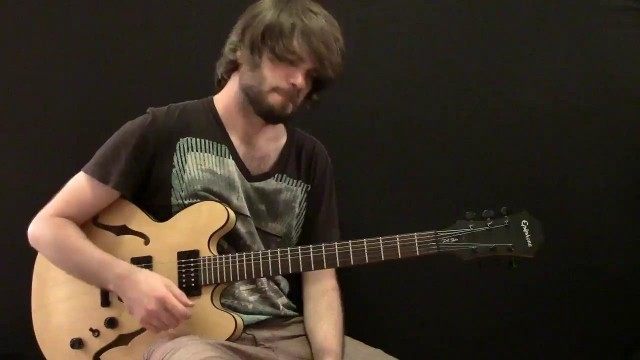Guide Tones part 2
Welcome!
This lesson has two separate phrases but are all played as one long passage. The Chord voicings used are also tabbed for you, not the rhythms though. I will leave that part of it for you to work out by ear if you wish.
I will refer to the two separate phrases as Phrase 1 and 2.
Phrase 1
Here we have three nice little clusters of notes. The first group or cluster begins on C (the 3rd) and ends on A (Root note) we have an 8th note rest until we launch off again with the notes B C and D. The next bar drops to the C again and down to the F# at the end of the second cluster.
Essentially what I have done is outlined the Root and third of Am in cluster one. Then, we are drawing a similar picture and not really giving the listener the full effect of the D7 chord until the end of the second cluster, midway through the second bar. Technically we did outline the D7 at the beginning of the second bar with the use of the C note (the 7th) but since that note was already a focus point in the previous bar, you will probably agree that it doesn't quite sound like the chord has changed until we reach that F#.
Its a nice little deception of the ears.
The third cluster begins with the notes G A and C. Of which the latter two are strong chord tones of D7 which then drop in the third bar to a B note (the 3rd of Gmaj7). These notes give a much stronger sense of change between bars compared to the previous cluster, which waited until midway through the bar. This part of the phrase descends down to the F# again (the 7th) ending on the D (5th). At this point, I want you to realize that where and when chord tones occur isn't always the most important factor. Your choice of rhythm and space(silence) is also going to have impact on how the notes you do play sound.
Within all of these examples, I have tried to incorporate a broad range of rhythmic approaches. You will need to use your ears just as much, if not more than your brain when considering these descriptions of each phrase. Listen to how the phrases push or pull the melody from one chord to the next.
You may not even enjoy the sound of any of my examples, but understand that the use of chord tones does make a melody stronger. When you use Guide Tone lines within improvisations there will always be a sense of direction despite the fact that your improvisations might not sound perfect and professional. This is however the first step to reaching higher levels.
Phrase 2
Again we have a series of clusters of notes appearing. The first bar of this phrase starts with focus on the 7th of Am. We then see it leads from F natural to F# between bar one and two. This quick semi tone approach is a nice Jazzy way to draw attention to the next chord, especially since we are repeating the same rhythmic approach as the previous bar. Only this time we continue the focus on F#. Finishing on the Gmaj7 chord with the same rhythmic approach again, focusing on the F# still but with more variation on the notes used.
This overall approach is called a Motif or rather, the first bar Am would be the Motif and the next two bars were slight variations on that same Motif.
Developing a simple sound (Motif) then repeating it in slightly different ways (aka developing the Motif) is common in many forms of music especially Jazz.
That's all folks. Right now I want you to jump over to the backing tracks provided with this tutorial and have a bit of a jam. You should try and memorize the licks we have looked at so far and play through them. See if you can develop some short melodies of your own with guide tone movements as well. Once your bored with that, join me for some more examples.

